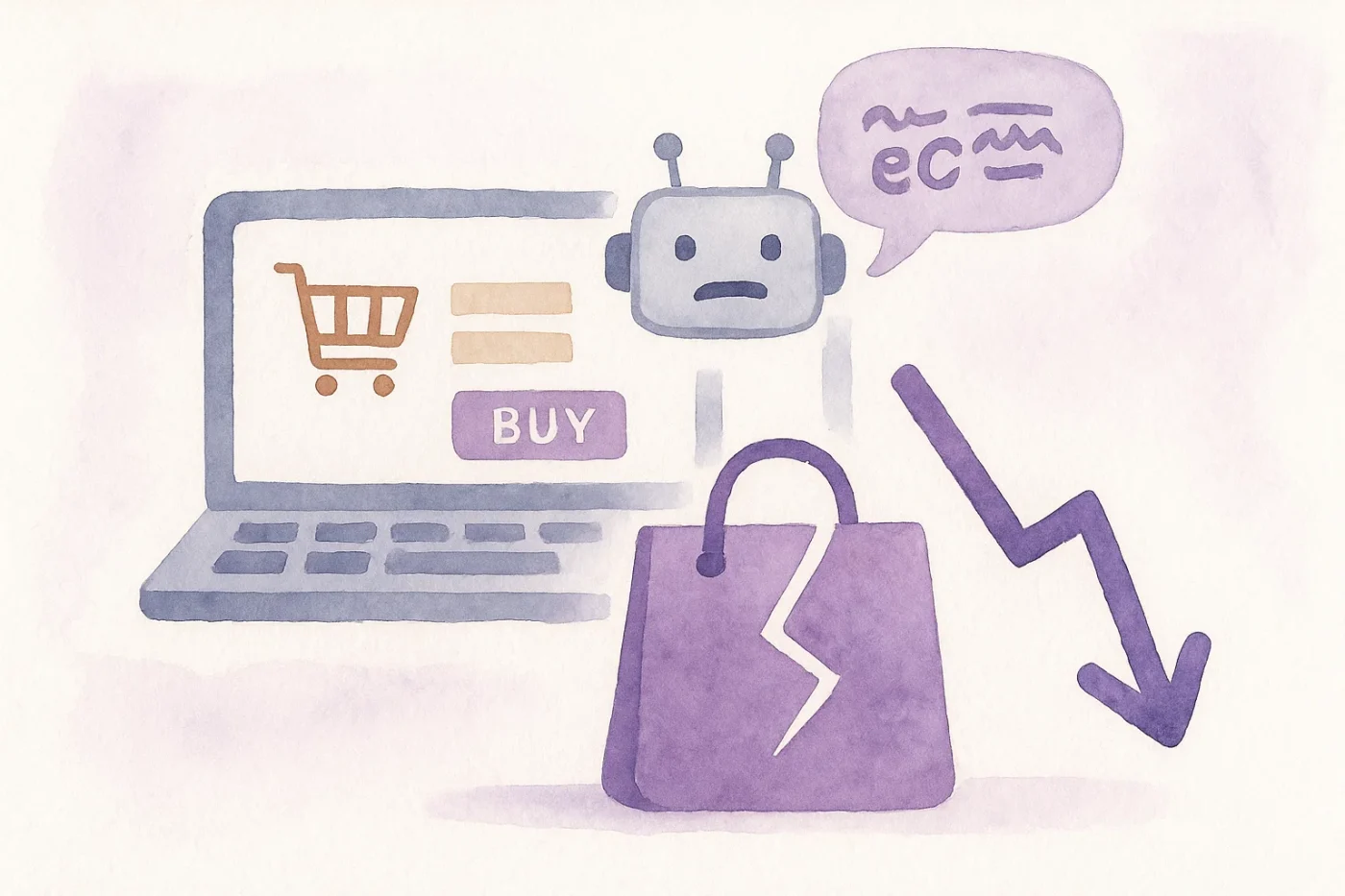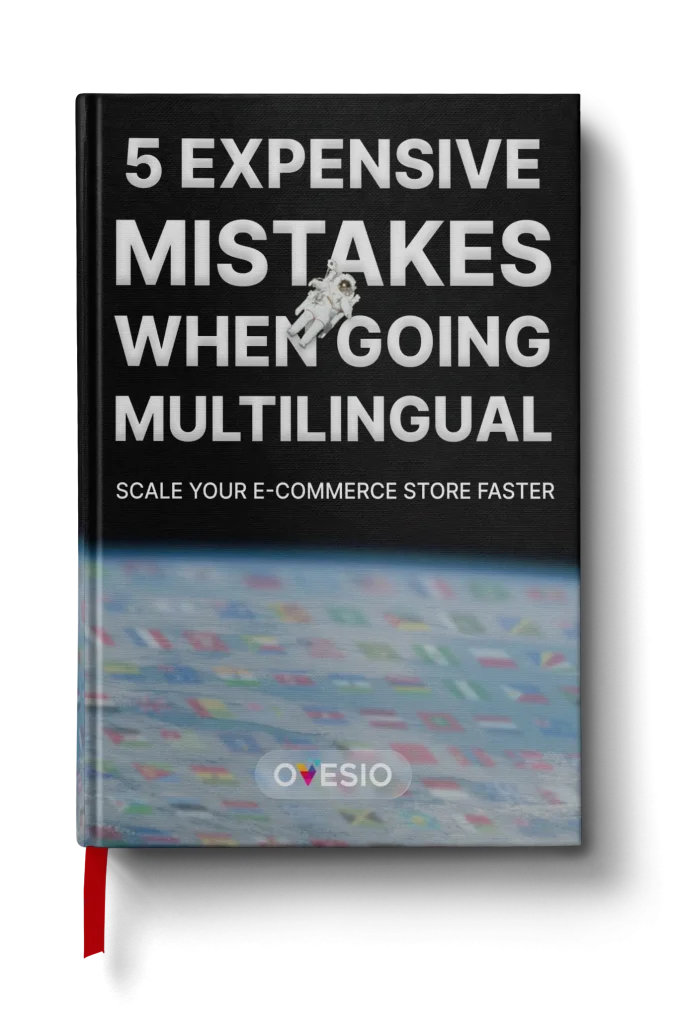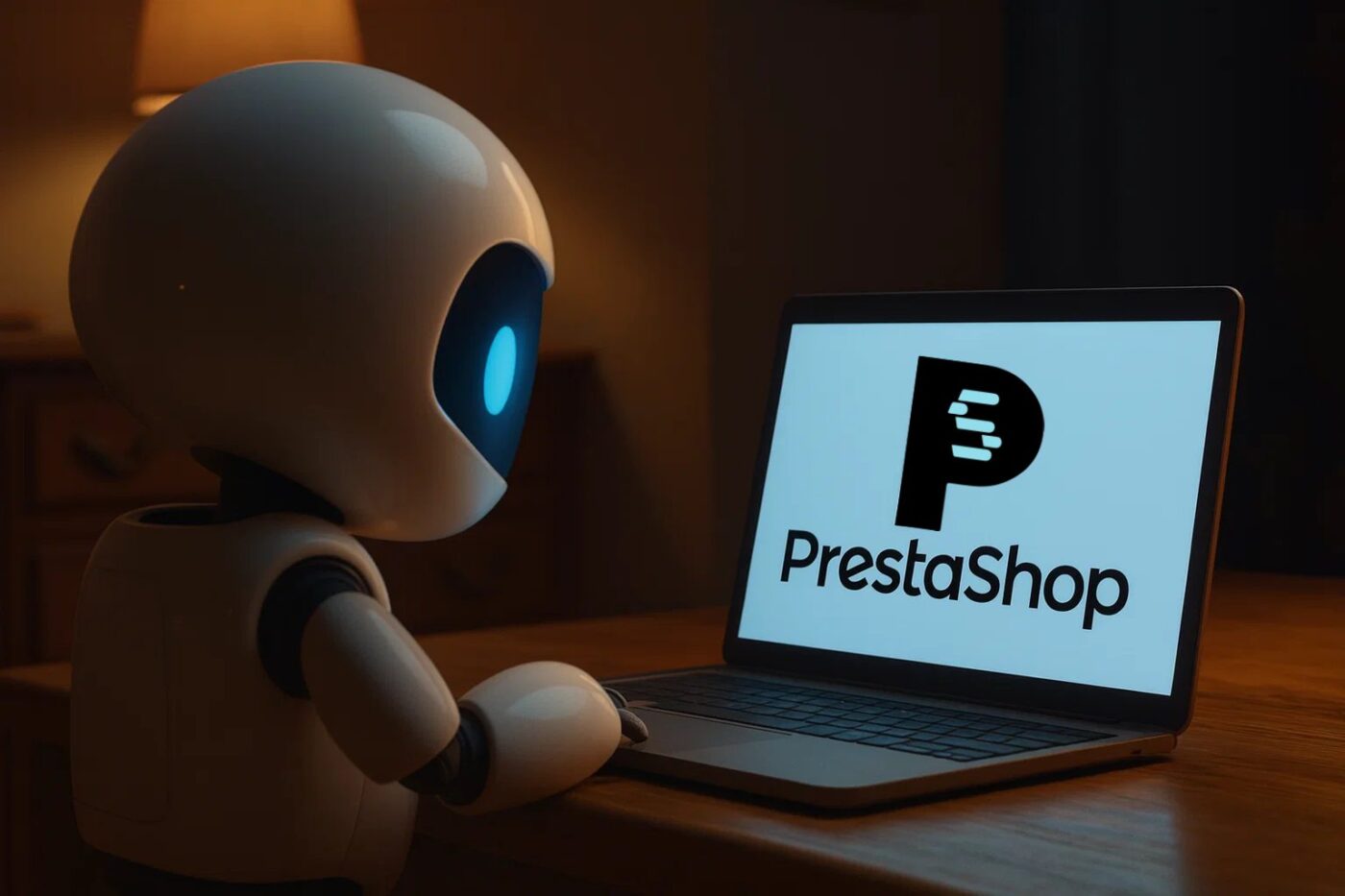How Bad AI Translations Hurt Your E-Commerce Store (+ Solution)

Global e-commerce is on track to hit $92.86 trillion in 2033, opening enormous opportunities for businesses to expand into new markets, but bad ai translations might stay in the way.
As companies race to scale internationally, many are making a costly mistake: relying on bad AI translations.
These quick-fix translation tools promise speed and savings, but in reality, they’re silently bleeding revenue, eroding trust, and destroying search visibility.
With 76% of consumers preferring product information in their native language, and 40% saying they will never purchase from a site that isn’t localized, the risks are too high to ignore.
In this post, we’ll break down the hidden costs of bad AI translations in e-commerce, and what you can do to avoid them.
The Hidden Cost of Bad AI Translations
The obvious cost is lost money in the process, but what if… some mistakes go under the radar, and they make it to the product page or the ad? It’s much more complicated.
1.1. Brand Trust Takes a Hit
First impressions matter, especially online.
When a potential customer lands on your product page and encounters awkward phrasing, clumsy grammar, or culturally off-key messaging, your brand instantly loses credibility.
In e-commerce, written content is everything.
It’s how your customers understand your product, evaluate your brand, and decide whether or not to trust you with their money.
Bad AI translations create a disconnect between your brand and your audience, undermining trust before a sale can even happen.
In some markets, a single mistranslation can be perceived as unprofessional, careless, or even offensive, driving customers away for good.
1.2. Conversion Rates Plummet
Bad translations don’t just bruise your image, they kill conversions.
Studies show that 90% of global consumers expect a localized experience.
If your site isn’t in their native language, or worse, if the language reads like a broken machine script, many won’t even stick around. In fact, 9 out of 10 users will ignore a product entirely if it isn’t properly translated.
On the flip side, e-commerce companies that invest in high-quality translation and localization have seen dramatic gains:
- 35% increase in international sales
- 47% boost in customer loyalty
- 53% rise in customer satisfaction
Language isn’t just a preference, it’s a purchase driver.
1.3. SEO Sabotage
Search engines reward clarity, context, and relevance, all things bad AI translations fail to deliver.
When product pages are poorly translated, keywords become irrelevant, meta descriptions suffer, and content loses its meaning. This leads to lower rankings in local search results, decreased visibility, and fewer inbound visitors from international markets.
Google’s algorithms are designed to detect quality issues.
Mistranslated pages signal low trust and poor content quality.
In the long run, bad AI translations drag down your SEO performance, making it even harder to compete globally.
Why Most AIs Fails E-Commerce
Most AIs that are not trained and built specifically for E-Commerce translations lack context and terminology. If the AI has no idea what SEO is, it is impossible to get good translated metatags from it.
There are good tools on the market, but most of them suck. Here’s why!
2.1. Context Blindness & Cultural Errors
AI translation tools may be fast, but they lack human judgment.
These systems struggle with contextual nuance, leading to hilarious or harmful mistranslations.
Take the word “fork.” Is it a bike component or an eating utensil? AI often can’t tell. The result: confusing or embarrassing product descriptions that alienate shoppers.
Some infamous real-world examples include:
- “Fly in leather” mistranslated as “Fly naked” in Spanish by American Airlines
- Product instructions misinterpreted as “Insert the baby into the oven” instead of “Insert the cable into the outlet”
- Restaurant menus with “fried children” in place of fried chicken
In e-commerce, these aren’t just funny, they’re dangerous. They erode trust and kill conversions.
2.2. Terminology & Search Failures
E-commerce content is loaded with industry jargon, technical specs, and branded terminology, areas where AI tools often fail.
When product names or attributes are mistranslated, search functionality breaks. Customers can’t find what they’re looking for, and your visibility plummets.
eBay’s research confirmed this: mistranslations caused lost search matches, abandoned sessions, and ultimately, lost revenue. If your site doesn’t speak your customer’s exact language, literally and semantically, you risk disappearing from both search engines and buyer journeys.
2.3. UI and UX Damage
Translation errors aren’t limited to product descriptions, they also disrupt user interfaces.
Poorly translated navigation menus, distorted promotional banners, and broken formatting can make your store look amateurish and hard to use.
Even worse, critical labels like “Buy Now,” “Free Shipping,” or “Secure Checkout” might be mistranslated, leading to abandoned carts and lost sales.
Bad AI translations confuse users at key touchpoints, degrading the overall user experience (UX) and driving international customers away before they complete their purchase.
How to Avoid the Pitfalls
Up to this point, we have talked about the problems, but now it’s time to talk about the solutions.
3.1. Invest in Professional Translation & Localization
The solution starts with human expertise.
While AI can support scale, it lacks the cultural intelligence and contextual accuracy that professional translators provide. Human experts can interpret tone, correct nuance, and adapt messaging appropriately for each target audience.
And the results speak for themselves:
- 252% ROI within 12 months of translation investment
- 1.5x higher revenue for companies that localize effectively
Professional translation isn’t a cost, it’s a growth strategy.
If you need maximum speed at the most efficient cost, an option would be to use AI translation engines designed specifically for E-Commerce. Let’s be honest, translating a store with 10,000 products into 27 different languages is not cheap and neither fast.
But tools like Ovesio, which has their own translation engine and something called AI Inspector, they can pull super-accurate translations, and all automatically.
3.2. Build a Localization Strategy
Translation is just the beginning. To truly connect with global audiences, you need localization, a comprehensive approach that adapts your entire brand experience.
That means:
- Using local currencies and payment methods
- Adapting visuals, color schemes, and cultural imagery
- Meeting local regulatory and legal standards
- Providing culturally aware customer support
Done right, localization ensures every customer feels like your store was built just for them.
3.3. Apply Best Practices
Success with global content starts with smart workflows:
- Start with clean, well-structured source copy, clear writing translates better.
- Use terminology databases and translation memories to maintain consistency across all product lines and channels.
- Blend AI-powered tools with human post-editing to scale efficiently while maintaining quality.
Think of AI as a helpful assistant, not a replacement for expert review. This hybrid model gives you the best of both worlds: speed + accuracy.
Here’s an article on: How To Get Amazing Results With AI Translation in E-Commerce
Looking to scale your e-commerce store to global markets?
Expanding into new languages can be time-consuming, and if you’re not prepared, it can cost you a ton in lost sales and headaches.
That’s why we created “5 Most Expensive Mistakes When Going Multilingual”, a FREE e-book designed to help you sidestep the pitfalls that trip up so many stores and scale your business faster, smarter, and more profitably.
Consider this:
- The U.S. e-commerce market is worth $8.3 trillion in 2025, just 30% of the global total.
- Worldwide, e-commerce is a $28 trillion opportunity.
- Europe alone accounts for $6 trillion today and is projected to grow to $18.8 trillion by 2033.
Don’t leave money on the table, learn how to avoid the five most painful business mistakes before you launch your next market.
Click the image below to grab your free copy 👇
Conclusion
Bad AI translations are silent killers. They cause invisible revenue leaks, undermine SEO, and confuse potential customers at the most critical moments.
But when done right, translation and localization become powerful growth engines, boosting international sales, customer satisfaction, and brand loyalty.
The choice is clear:
Automate blindly and risk billions, or translate smart and win global markets.
Frequently Asked Questions
1. Are AI translation tools completely unreliable?
Not always, but for e-commerce, unsupervised AI translations frequently miss context, tone, and technical terminology. This leads to customer confusion and lost conversions.
Especially if that AI tool was not built by having E-Commerce translations in mind.
2. Can bad translation really affect SEO?
Yes. Search engines penalize content that’s poorly written or confusing. Grammar issues, irrelevant keywords, and awkward phrasing lower your visibility in local search results.
3. What industries are most at risk?
Sectors like retail, electronics, fashion, and health are highly vulnerable, especially when product specs, brand voice, or cultural relevance play a key role in purchasing decisions.
4. Is human translation cost-effective?
Absolutely. Studies show companies earn up to 252% ROI on professional translation investments, with payback in under 12 months.
5. Can I use AI + human review together?
Yes. A hybrid workflow, where AI handles the first draft and human experts refine it, offers the best of both worlds: efficiency plus accuracy.






